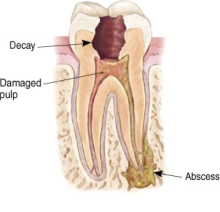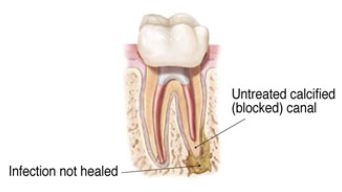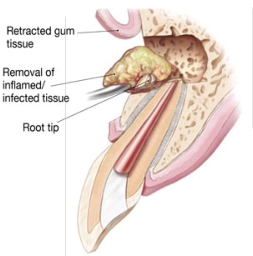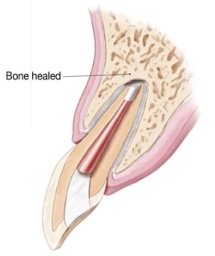Endodontic Procedures
Consultations
For every new patient that we see a
consultation is given. Radiographs are taken of
the affected area, and your medical history and
symptoms are reviewed by the doctor.
Additionally, several tests are performed to
determine if you need root canal treatment, what
endodontic treatment is necessary, if the tooth
is cracked, and which tooth is causing the
problem. After the exam, the doctor goes through
the treatment options available to you, risks
and benefits of those options, and any questions
you may have.
Initial treatment
First the endodontist administers local
anesthetic. After the tooth is numb, the
endodontist places a small protective sheet called a �dental dam� over the
area to isolate the tooth and keep it clean and
free of saliva during the procedure. The
endodontist makes an opening in the crown of the
tooth. Very small instruments are used to clean
the pulp from the pulp chamber and root canals
and to shape the space for filling.
protective sheet called a �dental dam� over the
area to isolate the tooth and keep it clean and
free of saliva during the procedure. The
endodontist makes an opening in the crown of the
tooth. Very small instruments are used to clean
the pulp from the pulp chamber and root canals
and to shape the space for filling.
After the space is cleaned and shaped, the
endodontist fills the root canals with a
biocompatible rubber-like material called
�gutta-percha.� In most cases, a temporary
filling is placed to close the opening. The
temporary filling will need to be removed by
your dentist before the tooth is restored.
Sometimes, depending on the difficulty of the
tooth or due the size of the infection, the
procedure may be spread over several
appointments.
After the final visit with your endodontist, you
must return to your dentist to have a crown or
other restoration placed on the tooth to protect
and restore it to full function.
Endodontic
Retreatment
After the tooth is
numb, an access opening is made through the
tooth, and a rubber dam is placed to isolate the tooth. The filling material that was
previously in the tooth is removed, and the
canals are cleaned and reshaped. After removing
the canal filling, the endodontist can clean the
canals and carefully examine the inside of your
tooth using magnification and illumination,
searching for any additional canals or unusual
anatomy that requires treatment.
isolate the tooth. The filling material that was
previously in the tooth is removed, and the
canals are cleaned and reshaped. After removing
the canal filling, the endodontist can clean the
canals and carefully examine the inside of your
tooth using magnification and illumination,
searching for any additional canals or unusual
anatomy that requires treatment.
After cleaning the
canals, the endodontist will fill and seal the
canals and place a temporary filling in the
tooth. If the canals are unusually narrow or
blocked, your endodontist may recommend
endodontic surgery. After the root canal
treatment is done you will need to return to
your dentist as soon as possible to have a new
crown or other restoration placed on the tooth
to protect and restore it to its full function.
Apicoectomy
Apical surgery is
performed to evaluate for cracks, root fractures
to repair, resorptive lesions or perforations of the root system. With these
procedure, the endodontist makes an access
opening through the gum tissue near the tooth to
see the underlying bone and to remove any
inflamed or infected tissue. The very end of the
root is also removed. If a tissue sample is
large enough, it will be sent to a pathology lab
for an evaluation and a diagnosis.
perforations of the root system. With these
procedure, the endodontist makes an access
opening through the gum tissue near the tooth to
see the underlying bone and to remove any
inflamed or infected tissue. The very end of the
root is also removed. If a tissue sample is
large enough, it will be sent to a pathology lab
for an evaluation and a diagnosis.
A small filling may be
placed in the root to seal the end of the root
canal, and a few stitches or sutures are placed
in the gingiva to help the tissue heal properly.
Another appointment is required a few days after
the surgery to remove the sutures. Over a period
of months, the bone heals around the end of the
root.

|